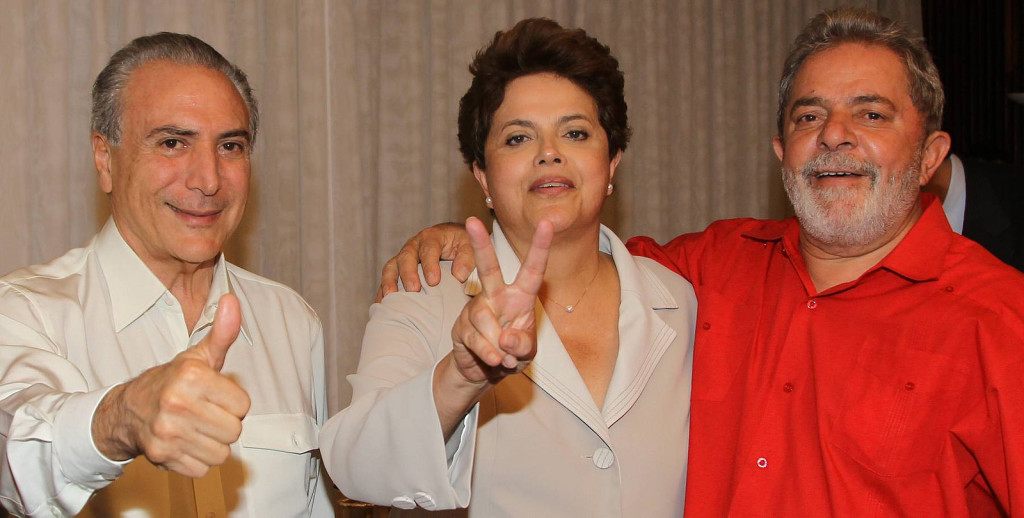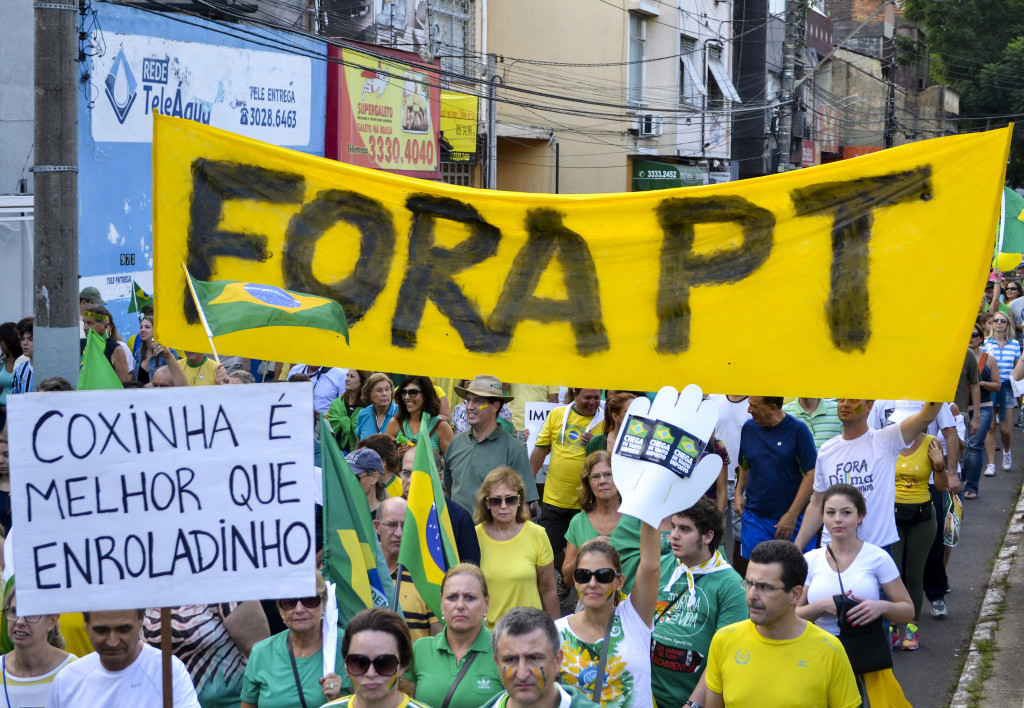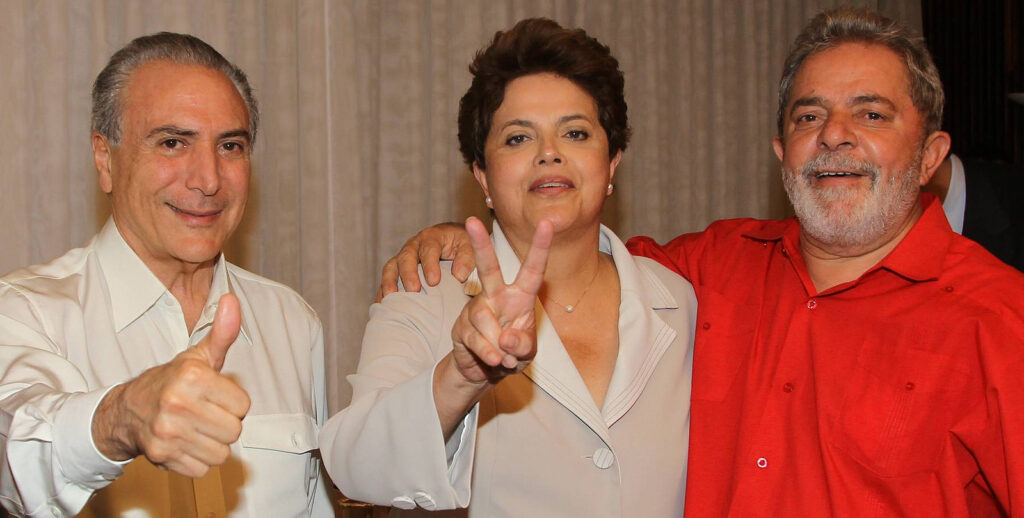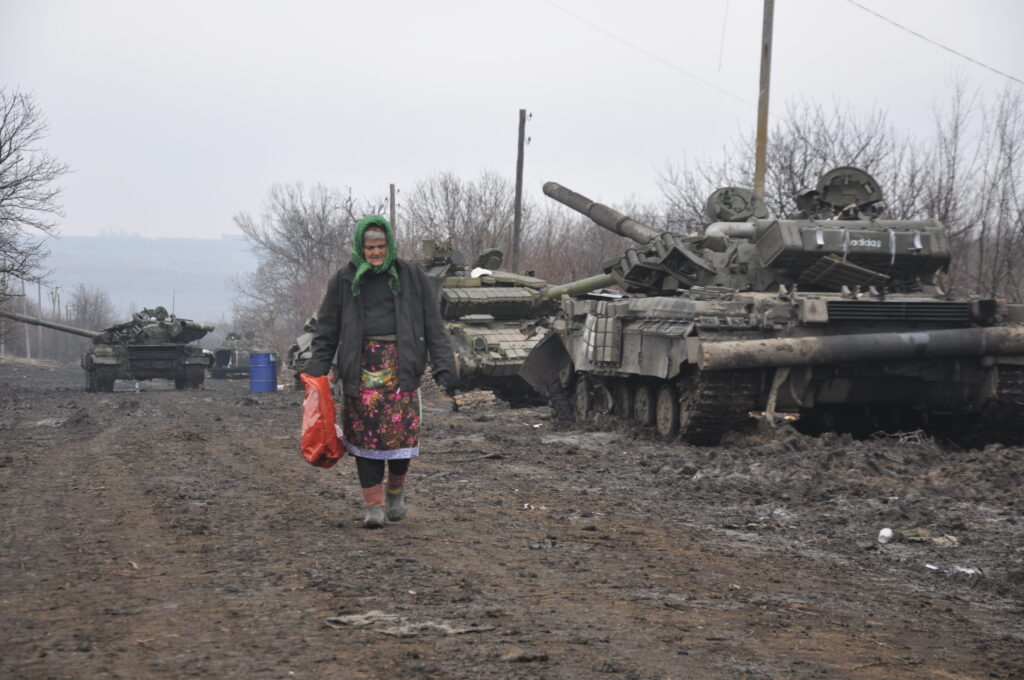
Brazil is in the third year of its worst recession ever. Three years after a severe financial crisis, the political and economic future of the former Latin American powerhouse looks highly uncertain. There are signs of tentative recovery, but underlying structural and political challenges remain. On the brighter side, the current slump is so severe policymakers are finally committing to sweeping reform. However, economic reform can only achieve lasting, transformative effects when combined with an overhaul of the very broken political system. This daunting task means weeding out the rampant corruption embedded deep in Brazilian political culture.
Commodity Boom and Fiscal Irresponsibility
The recession began with a crash in oil prices in 2014, but a multi-billion dollar corruption scandal in state-owned oil company Petrobras exacerbated the crisis. Since its independence from Portugal in 1822, Brazil has relied heavily on raw material exports, even after the industrialization of the second half of the twentieth century. And this too has been sliding. As late as 2014 manufactures made up only 34.8% of Brazilian exports, down from 58.4% in 2000.[1] Meanwhile, over half of Brazilian exports in 2015 were raw commodities, most notably oil. As Chinese demand for commodities grew, the industry and services sectors shrank, contracting 6.2% and 2.7% respectively in 2016. Such an economic profile left Brazil vulnerable to dramatic, unpredictable fluctuation in global commodity prices.
In 2003, the Brazilian economy took off after several years of sluggish recovery from an exchange rate meltdown in 1998-1999.[2] The cause of this dramatic revival: global commodity prices were booming as China’s GDP grew at a dizzying 9-10% annually. As the economy grew, China’s demand for resources did as well.[3] Brazil’s sales of soybeans, minerals and oil to China skyrocketed, driving economic growth. In a further stroke of luck, Brazil discovered major offshore oil reserves just as global oil prices were skyrocketing. Brazil was lauded as one of the region’s most promising economies (BRICS) and attracted large investment inflows from China and around the world.
During the economic boom period of 2003-2013, President Lula’s policies brought about great social advances. In the five years after he took office, poverty fell from 12% to 4.8% as 20 million Brazilians benefitted from initiatives like cash transfers to the poor (Bolsa Familia), aid to small farmers and reforms of pensions and labor policy. These impressive results garnered widespread admiration for Lula, who left office in 2013 with an approval rating surpassing 80%. Brazil became the gold standard of progress in the region. Unfortunately, Lula’s programs were only successful as long as export surplus and foreign investment could bring in continuous inflows of cash. Since the economic downturn, much of this social progress has reversed; poverty and unemployment rates slowly creep up as the interim government implements austerity.

Lula’s policies boosted the economy and living standards in the short term, but problems arise when governments forgo fiscal soundness to achieve easy growth. Take the global financial crisis of 2008: Brazil implemented a countercyclical[4] approach to stave off recession but failed to reinvest trade income to boost economic diversification and efficiency. Instead, large amounts of cash went to politically popular social spending – handouts that helped people in the short term but did little for long-term economic wellbeing. In the words of Senior fellow at the Inter-American Dialogue Peter Hakim, “the Lula administration could not resist the temptation to spend freely in the boom years and not save for harder times.”
Unfortunately, what goes up must come down. Around 2013, global commodity prices began to drop toward their pre-2003 levels; declining revenues killed growth even as the budget structure remained unchanged.
To curb rising inflation and unemployment and avoid a deficit crisis, then-President Dilma Rousseff would have been wise to opt for austerity from the first warning signs disaster. Instead, Rousseff’s government haphazardly tried to spend its way out of recession but lacked the expertise to execute an effective stimulus. By cutting extensive subsidy programs for corporations, pension programs for the population and the generally out-of-control government payroll, Brazil might have avoided its bleak situation of 2015: debt rating degraded, inflation at its highest since 2003. Not surprisingly, the population’s confidence in its leadership and optimism for its economic future was at depressingly low rates.
The Politics of the Crash: Petrobras and Beyond
Of course, it is impossible to discuss the Brazilian economic crisis without delving into the Petrobras scandal; the two are inextricably linked.
Without strong institutions or a political culture of transparency, economic boom times enable reform backsliding.[5] A positive balance of payments can easily provide a cover for corruption as political elites skim the top off government revenue. In a period when the population is growing more prosperous, there is little pressure to call out such corruption, so it often goes undetected and unpunished. For this reason, it was Rousseff who suffered indictment while Lula remains a beloved national figure even though he was directly implicated in Brazil’s huge government corruption scandal.

The Petrobras scandal is a textbook example of the sociopolitical consequences of the resource curse. The 60% state-held oil firm accounted for over 10% of Brazil’s GDP, which points to the huge of role oil and commodities in the economy and the extent of government involvement. After a 2007 discovery of major offshore oil reserves, Petrobras promised to lead Brazil into a new era of economic prosperity.[6] Then, the scandal broke. In 2014, evidence surfaced that over many years, Brazilian elites had made off with billions of US dollars of bribes, money laundering and rogue contracts.[7] Since Petrobras was publicly traded on the New York Stock Exchange, the corruption could not be brushed under the rug but had to be investigated by US and international regulatory authorities.
Killing investor confidence and public morale, the Petrobras affair undoubtedly contributed to Brazil’s economic woes. But in a way, it also comes as a blessing in disguise. At best the scandal presents an opportunity for Brazilian politicians to weed out corruption once and for all; only when strong and transparent institutions develop can economic reform have lasting impact.
Interim president Michel Temer’s economic reforms rightfully include austerity and deregulation to create a more business-friendly regulatory environment (Brazil currently ranks pathetically low at 116 of 189 economies on the World Bank’s ease of doing business index). Even more promising, he has installed qualified economic officials in key roles who have already begun to nudge Brazil back onto a growth path. Unfortunately, the administration has been less effective in weeding out corruption. As of now, criminal charges plague many of Brazil’s most elite politicians and an alarming proportion of Congress. According to Transparencia Brasil, an independent watchdog agency, nearly 60% of senators and lower house deputies have been investigated or convicted of a crime at some point in their careers. In fact, Temer himself has been implicated in the Petrobras scandal.
These discouraging facts point to the challenges that lie ahead for Brazil. As long as a culture of corruption exists, economic reform can only be temporary. According to USC professor and political economist Carol Wise, “the current political crisis is so deep that it will impede economic reform until Brazil undertakes political reform.” Otherwise, as soon as the next cycle of economic growth hits, elites will revert to their well-worn path of least resistance, abandoning reform for personal enrichment when public pressure for change subsides.
As Hakim has pointed out, the current recession could have been prevented had either Lula or Rousseff “invested more in reforming various outmoded policies and institutions, including counterproductive labor laws, unwieldy tax codes, complex business regulations, poor education and many other roadblocks to innovation and higher productivity.” Now, their successor in the 2018 elections will have the chance to make these changes, provided they have the ability, motivation and opportunity to do so. The Brazilian electorate must recognize the changes needed and choose the political candidates committed to making them. This requires a collective understanding that while corruption benefits many in the short term, ultimately, developing sound institutions will boost the country’s prosperity and stability. Only then can financial crises like this be avoided, or at least mitigated.
[1] Carol Wise, Dragonomics:The Rise of China in Latin America, Yale University Press, forthcoming 2017, pg. 46.
[2] Wise 27.
[3] Wise 27.
[4] Economic policies that run counter to boom and bust cycles: reducing spending and raising taxes in a boom period, and (in this case) increasing spending and cutting taxes during a recession to stimulate growth. In contrast, a procyclical policy involves spending more and taxing less in a boom and vice versa. Economists often debate the pros and cons of each approach.
[5] Stanford political science professor Terry Karl frames this phenomenon as an institutional side of the resource curse that often afflicts “petro-states” like Brazil: “commodity-led growth induces changes in prevailing notions of property rights, the relative power of interest groups and organizations, and the role and character of the state vis-à-vis the market.” Wise 30.
[6] Wise 31.
[7] Wise 31.
The views expressed by the author do not necessarily reflect those of the Glimpse from the Globe staff, editors or governors.







